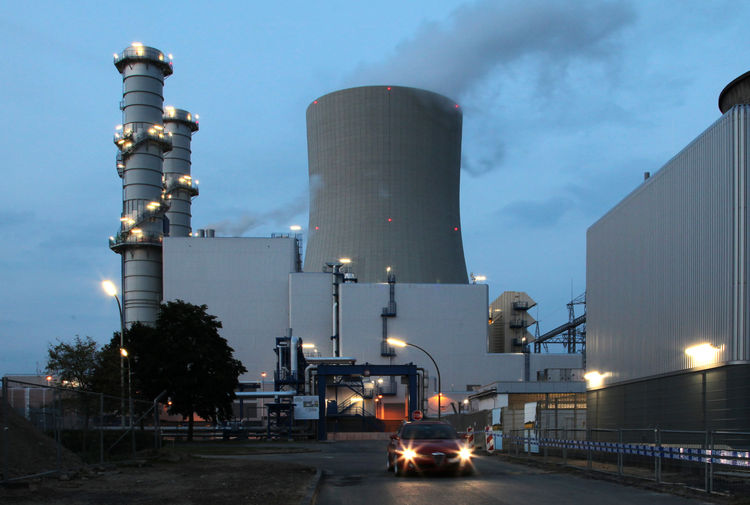- Despite Huge Gas Reserves, Power Plants Suffer Shortages
Over the years, many of the nation’s gas-fired power plants which are responsible for over 70 per cent of the energy being generated continue to suffer gas shortages.
Nigeria has around 181 trillion cubic feet of proven gas reserves plus much more in undiscovered gas resources. But despite having the largest gas reserves in Africa, only about 25 per cent of those reserves are being produced or are under development.
The country currently has around 7,000 megawatts of installed electricity generation capacity but less than 5,000MW is often in operation. Total electricity generation stood at 3,659.60MW as of 6am on September 25, the latest data from the Federal Ministry of Power, Works and Housing showed.
The nation has three hydropower plants and 24 gas-fired plants.
National gas production stood at 241.63 billion cubic feet in April, translating to an average daily production of 8.054 billion standard cubic feet per day, representing 1.34 per cent decrease compared to March statistics, according to the Nigerian National Petroleum Corporation’s latest monthly report.
The corporation said the daily average natural gas supply to gas power plants was at 835.27mmscfd, equivalent to power generation of 3,283MW.
It said, “Out of the 242.16Bcf of gas supplied in April, a total of 144.16Bcf of gas was commercialised comprising of 39.71Bcf and 104.45Bcf for the domestic and export market respectively.
“This implies that 59.53 per cent of the average daily gas produced was commercialised while the balance of 40.47 per cent was re-injected, used as upstream fuel gas or flared. Gas flare rate was 9.52 per cent for the month under review i.e. 769mmscfd compared with average gas flare rate of 10.24 per cent i.e. 810.03mmscfd for the period March 2017 to March 2018.”
The President, Nigerian Gas Association, Mr Dada Thomas, said last week that turning natural gas into a profit-making venture required huge investments in infrastructure that would address the five component areas of gas availability, gas affordability, deliverability, funding and the legal and regulatory framework.
He said, “Even with obvious challenges, companies are making significant strategic investments in gas pipelines and production to power Independent Power Plants and industrial customers and it is estimated that about 1,000 megawatts of the IPP capacity is presently idle due to a lack of gas delivery.
“As the market moves towards the concept of ‘willing buyer, willing seller’ and the government continues to make the investment environment more attractive, the country has massive prospects.”
The Group Chief Executive Officer, Oando Plc, Mr Wale Tinubu, said gas development in Nigeria had been stunted by the slow development of the market and the difficulty in accessing long-term, low-interest capital needed to undertake the massive projects that can ensure delivery of gas to all parts of the country.
“Gas development is closely tied to infrastructure development – or the lack of it. Gas infrastructure is a high-cost, low-margin business. It has a high barrier of entry and requires deep technical and terrain knowledge and experience to succeed,” he said in an interview with The Oil & Gas Year.
Tinubu said, “We believe the private sector is best positioned to fill the huge gap that remains in gas infrastructure investments, and Axxela remains at the forefront of championing progress in the expansion of natural gas supply to the nation.”
The Chairman/Chief Executive Officer, Nestoil Limited, Dr Ernest Azudialu-Obiejesi, at an industry event earlier in September, called on the Federal Government to increase the construction of gas pipeline in order to enhance access to natural gas supply by power-generating stations and other areas where gas is needed.
Azudialu-Obiejesi, who spoke at the second edition of the Nigerian International Pipeline Technology and Security Conference in Abuja, said, “Nigeria, with its abundant reserves of petroleum and gas, stands on the threshold of its own industrial revolution. To kick-start this industrialisation, we must not only extract these resources in the most efficient manner, but also refine and deliver them efficiently, and in a secure and cost-effective manner.”
In May, the Group Managing Director, NNPC, Dr Maikanti Baru, said the country was expecting over $25bn worth of investments in the gas sector.
He also stated that policies that would put an end to the flaring of gas had been developed by the corporation, adding that gas flaring in Nigeria had reduced significantly from 25 per cent to 10 per cent in the last decade.
Concerned about the volume of gas being flared in the country, the Minister of State for Petroleum Resources, Dr Ibe Kachikwu, said last week that any oil firm that could not end gas flaring ought not to be producing.
Kachikwu stated, “Government wants to end flare; oil companies still give lots of reasons why flare cannot be ended. Bottom line is cash call and money. But the reality is that whether or not we deal with cash call issues, it is not an optional agenda. It is a compulsive immediate agenda. It is destructive to the populace; it is intolerable in developed countries and it should not be tolerable here either.
“Any oil company that cannot find a way to end its flare ought not to be producing. And I have said to the DPR that beginning from next year, we are going to get quite frantic about this. For companies that cannot meet with extended periods, the issue is not how much you pay in terms of fines for flaring; the issue is that you will not produce. We need to begin to look at foreclosing of licences. It is that urgent.”

 Forex4 weeks ago
Forex4 weeks ago
 Naira4 weeks ago
Naira4 weeks ago
 Billionaire Watch4 weeks ago
Billionaire Watch4 weeks ago



 Naira4 weeks ago
Naira4 weeks ago






 Naira3 weeks ago
Naira3 weeks ago


 Naira3 weeks ago
Naira3 weeks ago






 Naira3 weeks ago
Naira3 weeks ago
 Economy4 weeks ago
Economy4 weeks ago
























